How fermented foods affect health and how you can make them yourself
If you want to do something good for your gut, you spoil it with fermented foods every now and then. This process, which is intended to make a wide variety of foods last longer, has been used for centuries. Longer shelf life is by no means the only advantage, because fermented foods improve intestinal health and thus also the immune system. In the following, we would like to show you how to ferment food, what happens to the products and how you can ferment vegetables yourself.
What does “fermented food” mean?
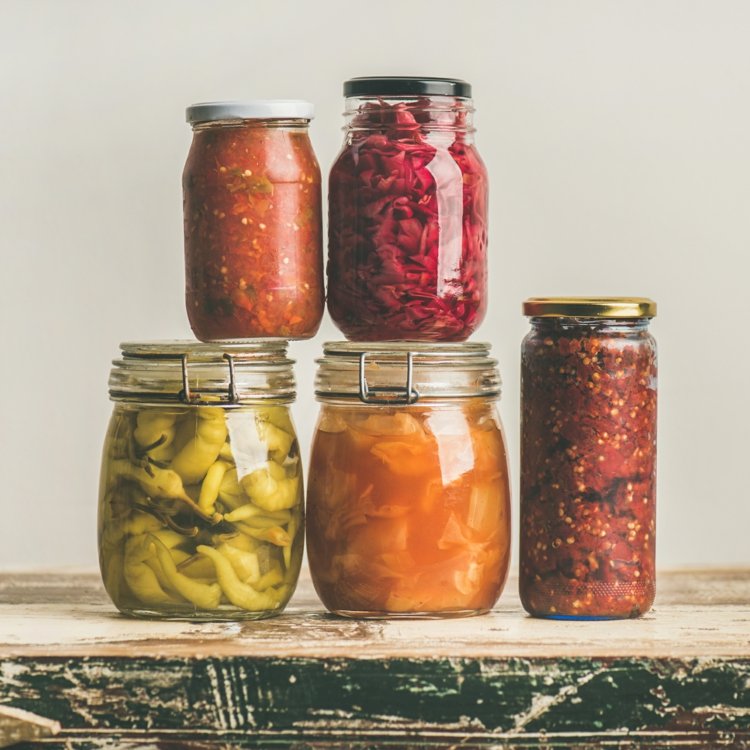
Fermentation means nothing more than “fermentation” and the fermentation process is a completely natural thing. With the addition of salt, finely chopped and packed airtight, depending on the food, bacteria, mold or yeast ensure that existing lactic acid bacteria, for example, break down the sugar molecules of vegetables. Lactic acid is produced, which in turn creates an acidic environment by lowering the pH, and mold and co. Cannot develop in this environment.
We have all enjoyed fermented foods, albeit partly unconsciously. Sauerkraut is one of them, for example. But also the dough fermented with yeast or the sourdough, from which we prepare a wide variety of pastries, are also included.
Why do fermented foods improve intestinal flora and health?

For one thing, fermented foods are already pre-digested by the acid, so to speak. This naturally makes digestion easier for the intestine. Lactic acid bacteria (probiotics) also actively help the intestine with digestion and thereby strengthen the entire digestive tract. Good gut health naturally also affects other important bodily functions. It guarantees a good metabolism, which is important so that the body can absorb and process all the important nutrients that we consume.
Other positive effects of the consumption of fermented products:
- help against food intolerance
- counteract fungal infections
- protect against harmful radiation
- regenerate the intestinal flora after taking antibiotics
- help with allergies
- help with skin diseases
Fermented food list
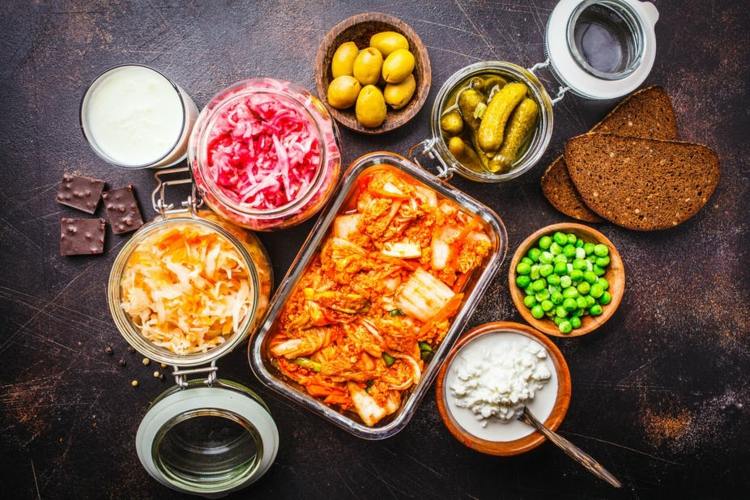
We would like to introduce you to a few of the best known and most popular fermented foods in the list below. Also learn what other nutrients each product has in addition to probiotics to give you a better idea of what is good for your body when you add it to your diet.
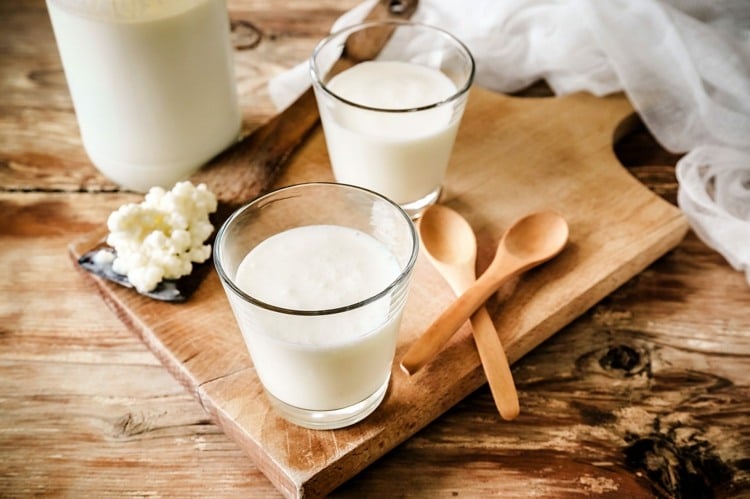
Fermented milk food
yogurt – The lactic acid bacteria make the yogurt probiotic. In order for this variant to generally benefit the intestinal and digestive tract for fermented foods, you should make sure to choose a brand that does not contain any additives. This also includes fruits and especially sugar, because these are calorie bombs. Instead, go for plain yogurt. Even vegans don't have to do without the benefits of yogurt. A variant without cow's milk is namely the delicious coconut milk yogurt, which is even easier to digest and contains all the important enzymes and probiotics.
kefir – This milk product is very reminiscent of buttermilk, because it is a sour milk drink, which, in contrast to buttermilk, also contains carbon dioxide, tastes sour and saturates. So that kefir can be produced, the so-called kefir mushrooms are necessary. In addition to probiotics, kefir also contains acetic acid bacteria and yeasts as well as many vitamins, folic acid, magnesium and other nutrients. All of the positive ingredients even have the ability to improve the complexion. So if you suffer from blemishes, you can try this drink.
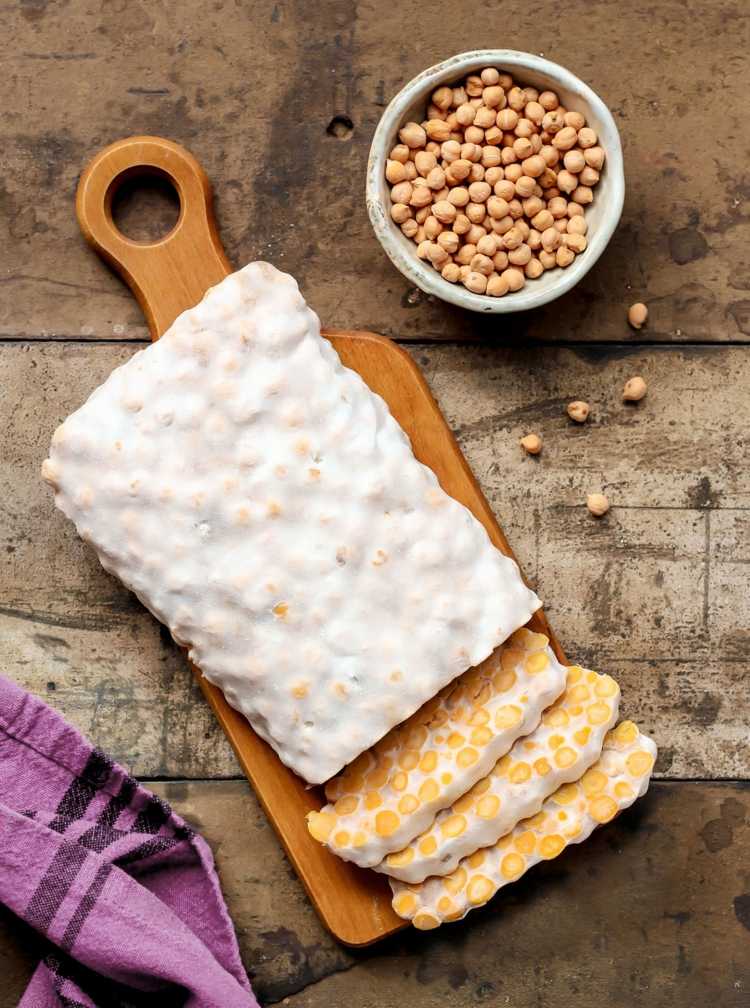
Fermented vegetables
sauerkraut – A fermented food that everyone knows and has already tried. Sauerkraut is a real classic among fermented foods and not without reason, because it scores with numerous health benefits – both physically and mentally. The fermented but raw white cabbage has a positive effect on the brain. People suffering from depression or anxiety can take a clear advantage. But not only that: white cabbage is also a real vitamin C bomb and also contains folic acid, iron, fiber and of course lactic acid bacteria, i.e. probiotics.
Tempeh – Soybeans ferment using a mold culture and you get a healthy and delicious meat substitute that not only vegans and vegetarians can benefit from. In addition to plenty of proteins and amino acids, the more aromatic alternative to tofu also contains magnesium, iron, potassium and phosphorus.
Miso – Also with miso, certain molds contribute to the fermentation. Like tempeh, it is made from soybeans, but is also combined with rice or barley. The millions of microorganisms contained in the finished product make miso perfect as a fermented food for intestinal health. There are also numerous other important minerals, including potassium. The famous miso soup is prepared from miso.
Purchased products – what should you pay attention to?
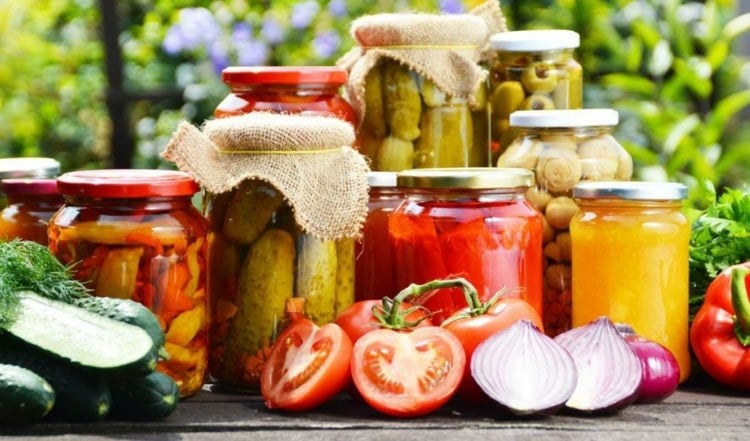
Of course, you can buy fermented foods in any supermarket. You will most likely do this with every purchase anyway, but so far you have not been aware of it. Sauerkraut or fermented beetroot can be found in almost every household. If you buy deliberately fermented or pickled products from now on, pay attention to the information provided by the manufacturer. The vegetables are not always really fermented. Some manufacturers just put it in vinegar instead. This should also be noted on the label.
Fermented foods – recipes and general tips

Would you like to make fermented food yourself? It is much easier than you might think. Especially if you want to make vegetables more durable this way, you can give it a try, because for vegetables you don't need any special ingredients such as mold cultures. Ferment cabbage, cucumber or beetroot? Absolutely no problem! But you can also try it with fruit, eggs, nuts and various legumes.
Fermenting vegetables – simple instructions

It is best to use vegetables that are bite-proof for fermentation. Softer vegetables are of course also suitable, but the end product is also more mushy. So it's a matter of taste. It is best to use a clean mason jar and prepare the selected vegetables to get fermented foods as follows:
- Clean the vegetables thoroughly and cut them into small pieces.
- Put it in the previously cleaned glass, but do not fill it too much, as fermentation will produce food gases that take up space in the sealed glass.
- Crush the vegetables with a mortar or similar object so that liquid can escape. You can fill up particularly firm vegetables, from which not much liquid can escape, with water. But the rule is only so much that the vegetables are just covered.
- Season the vegetables. Salt is commonly used, but is not essential. You can also use pepper, paprika, chilli and any other spices in addition or instead.
- Close the jar tightly with a lid and let it rest at room temperature for at least a week. It should never be exposed to direct sunlight.
- It is best to taste after about 6 to 8 days. If you already like the taste, keep the glass in the fridge. If not, you can let it ferment for a few more days or weeks.
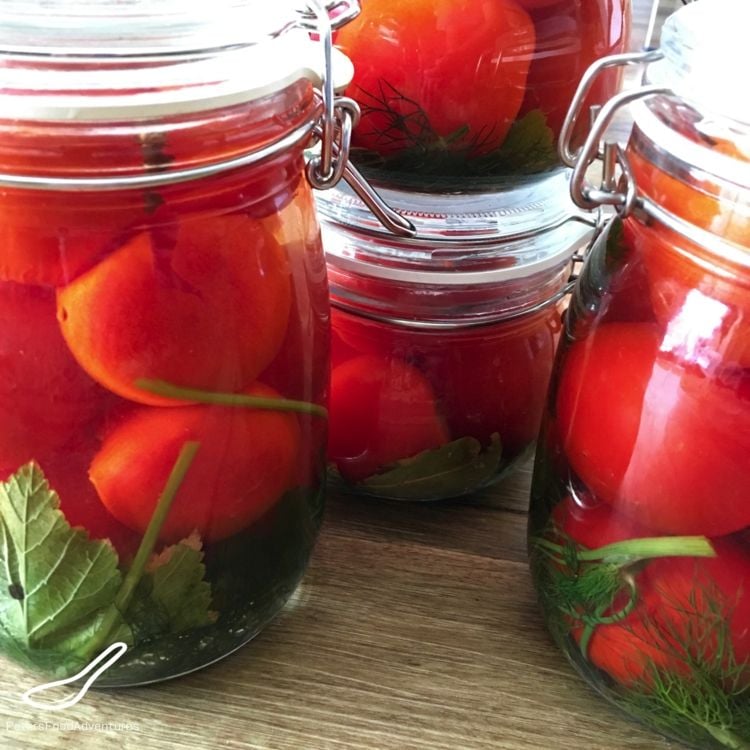
Fermented tomatoes
If you want to ferment tomatoes, small cherry tomatoes are particularly suitable because they are poured completely into the glass and do not have to be cut. So the vegetables stay firm.
- 750 ml mason jar
- 1 liter of lukewarm water
- 30 g salt
- 1 stem of fresh rosemary
- 2 stems of fresh thyme
- Cabbage leaves
Dissolve the salt in the water. Fill the cleaned glass with the tomatoes and spices and then with the salt water. However, leave a gap of about two finger widths to the lid. Then use the cabbage leaf to press the tomatoes down so that they do not float to the surface but remain completely under water. Close the jar and let the tomatoes ferment for at least 5 days.
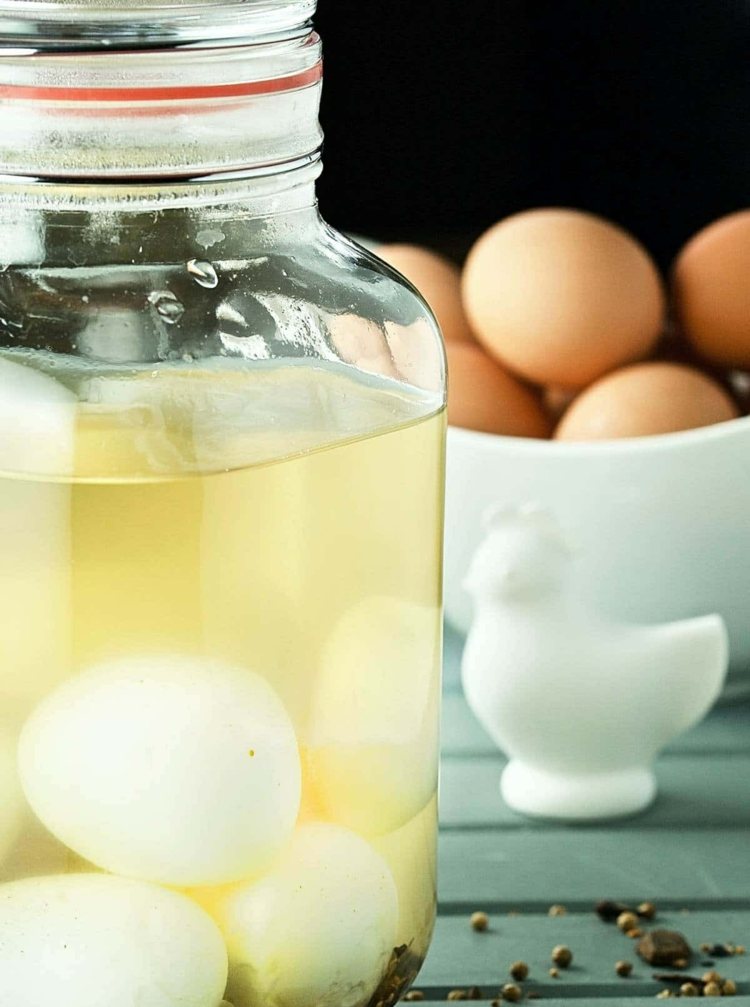
Fermented eggs with honey and mustard
For this recipe for fermented foods, you can use garlic fermented in honey. You will then find the recipe for this. For the pickled eggs you need:
- 12 hard-boiled and shelled eggs
- 200 ml warm water
- 100 g raw honey (never heated above 40 degrees!)
- 1 tsp salt
- 100 ml of white vinegar
- 3 tbsp hot mustard
- 1 tsp turmeric
- 1 piece horseradish, finely chopped (alternatively naturally ground mustard to taste)
- 3 to 5 cloves of garlic (preferably cloves of honey garlic)
Dissolve honey and mustard in warm water, after which you add the vinegar, mustard, horseradish and turmeric. Then put the eggs and the cloves of garlic in the jar, close and swirl a little so that everything mixes well. Let the eggs ferment in the refrigerator for a day or two.
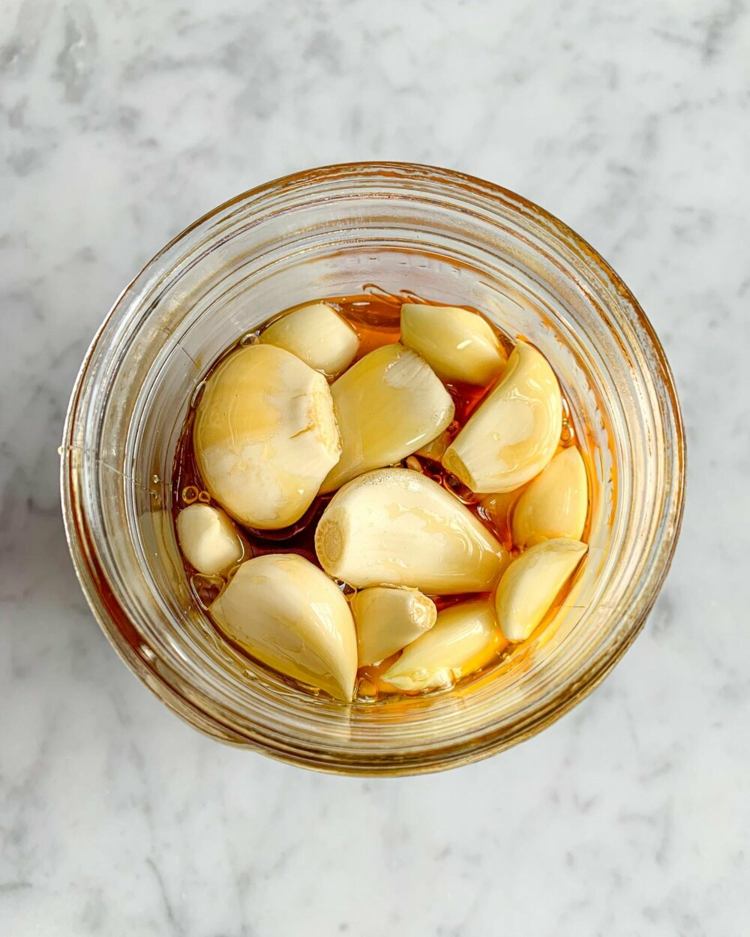
Garlic fermented in honey
- 300 g raw honey (never heated above 40 degrees!)
- 200 g of garlic
Peel the garlic and put the whole toes in a glass. Pour in the honey so that the toes are completely covered. Now the garlic has to ferment, which takes at least 6 weeks. You can also let it ferment for up to 6 months.
You can ferment any vegetables as in the basic recipe above. Fermented eggplants, fermented zucchini, fermented cucumbers and even fermented onions are a breeze and the spices you add can be customized to suit your taste. Pepper and mustard seeds are particularly popular, but also dried and fresh spices, caraway seeds, turmeric or for a little spicy chilli. If you use salt, keep in mind that the more salt you add, the longer the fermentation will slow down. High quality sea salt is particularly recommended.
Ferment the fruit

If you want to ferment fruit, it is best to use starter cultures (specially purchased whey or whey from a yoghurt / curd / buttermilk). If you only let fruit ferment with salt, there is a risk that in addition to the naturally occurring lactic acid bacteria, there are also yeast bacteria, which in turn produce alcohol. By using a ready starter culture, the lactic acid bacteria develop much faster than all the others.
So you can make fermented pineapple, apricot dates, figs, strawberries and Co. without the need for special spices. For fermented foods of this type, just do the following:
- Clean the fruit and pour into large glasses.
- Prepare a brine from water and starter culture and pour over the fruits until they are completely covered.
- Put small glasses on the fruit to make it difficult. So they stay under water.
- Close the jars and leave to stand for 1 to 4 days at room temperature without direct sunlight. Open the lid from time to time to allow the gases to escape (or use special lids).
- Then keep in the refrigerator for up to a month to slow down further fermentation.
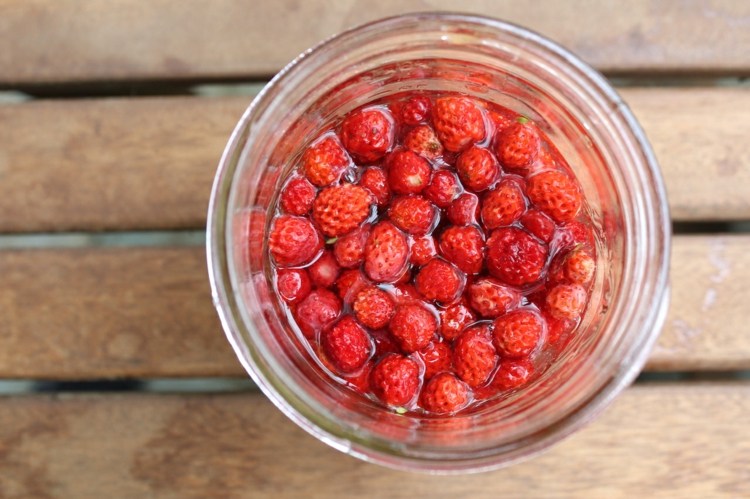
Fermented strawberries, too fermented dates or fermented figs and all other types of fruit that you like can be snacked or used for dishes at any time. For example, add fermented foods to your muesli in the morning or a smoothie.
Fermented oranges or other citrus fruits of this type should be very aromatic so that the fermentation succeeds in taste. In any case, the end result is incredibly delicious. Fermented lemons are very suitable, for example, for salads or various creams.
(youtube https://www.youtube.com/watch?v=TVUs8CDrMPU)
Fermented legumes, cereals and ginger
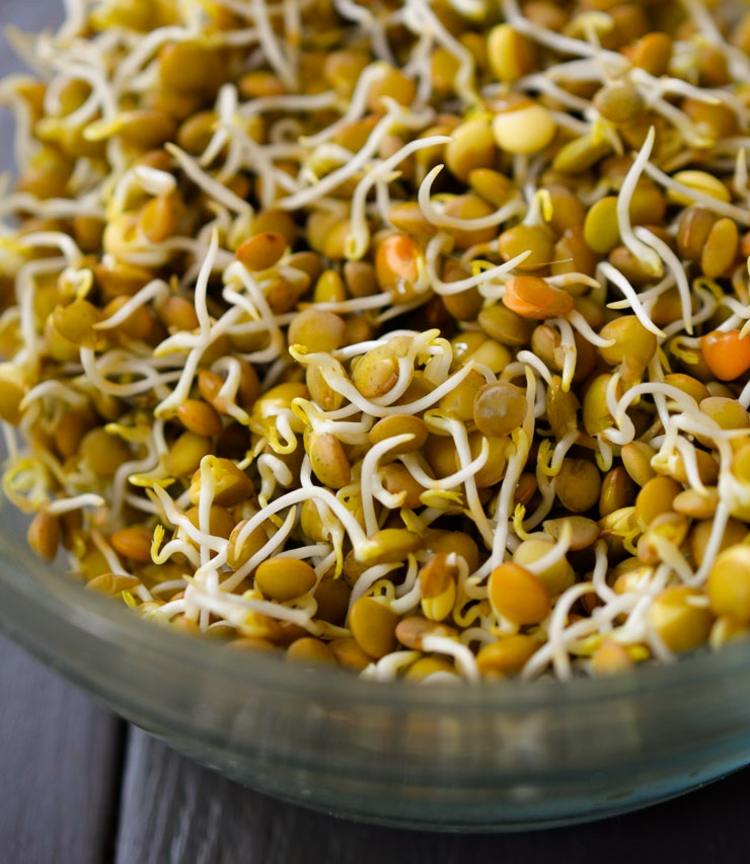
In order to obtain fermented foods from cereals and legumes, the seedling is required. Therefore, the process is only suitable for germinable cereals. These include rice, wheat, quinoa or spelled.

Fermented quinoa for the drink “Rejuvelac”
- Rice or other germinable cereals such as rice, spelled, wheat etc.)
- water
- Lemon juice
Germinated and fermented brown millet, fermented wheat germ and the like are also ideal for this drink. Whatever type you choose, fill it with a clean and sealable glass. Then fill up with water until the grains are covered and add a few drops of lemon juice (3 drops per liter of water). Close the container and let it stand at room temperature for 48 hours. Drain the Rejuvelac and enjoy it neat or continue to use it for other goodies that you would like to incorporate fermented foods into.
Ferment legumes
- 200 g legumes
- lukewarm water
- 3 tbsp lemon juice
Wash the selected legumes well under running water (in a sieve). Then put them in a bowl and cover them with lukewarm water (legumes exceed about 5 cm). Stir in the lemon juice and then let the bowl stand for 24 hours. Legumes do not need to be covered to ferment.
The next day, rinse and cook the legumes. You can also taste them with salt. Then drain and rinse again and you can use it for dishes, e.g. for salads, stews or hummus as a dip or spread.
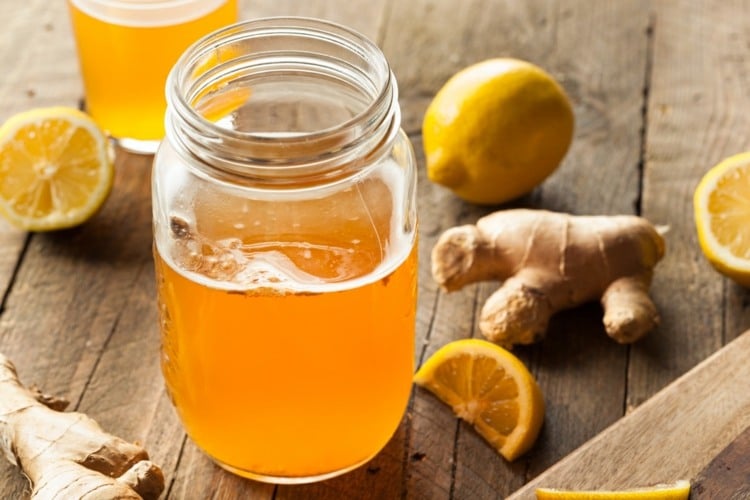
Fermented ginger
You don't need more ginger and salt, because this beneficial root is very aromatic in itself. For 3 kg of ginger you need 75 g of salt. Cut the exotic ginger into thin slices after peeling it. Then put it in a glass with the salt and mix everything well together. The salt now pulls the liquids out of the ginger, so additional water will probably not be necessary. Close the jar well with a lid and let it stand for at least 6 weeks.
Nuts as fermented foods
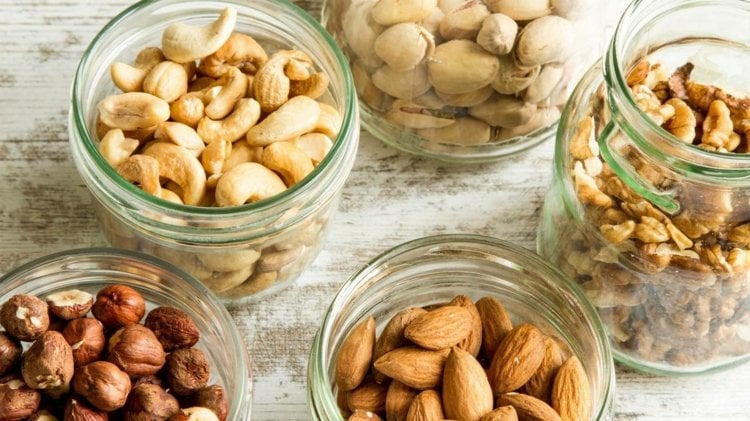
Whether fermented walnuts, fermented cashews, almonds or other beloved types of nut – they are extremely popular, but rather risky for making them at home. The reason for this is that nuts have hardly any carbohydrates and no natural lactic acid bacteria. So these have to be added for production. If the proportions are not correct, this could result in dangerous bacteria, including Salmonella. So it's best to do without this experiment or use a tried and tested recipe.
Fermented foods during pregnancy

We have already clarified that fermented foods are healthy. But can fermented foods be unhealthy during pregnancy? On the whole, such products are not a problem if you are pregnant. Like all other foods, they become dangerous when they are spoiled. Therefore caution is advised. In any case, you should avoid certain fermented products altogether to avoid food poisoning or stomach problems. Dairy products are one example. It is best to speak to your doctor. This can give you precise information on the topic.
The post How fermented foods affect health and how you can make them yourself appeared first on Deavita.com | Living ideas, design, hairstyles, make-up, lifestyle, health and beauty tips.





















